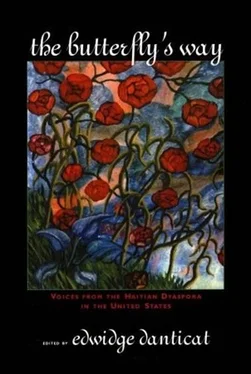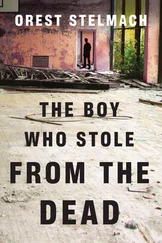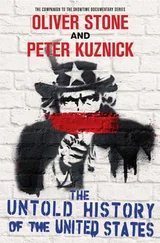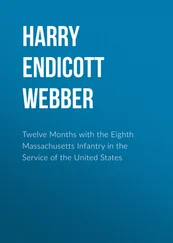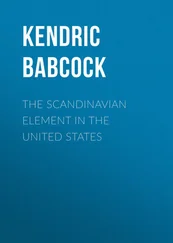From grammar school, I moved on to a high school with a mixed student population of African, European, Hispanic, and Asian origins. Although the different ethnic groups were tolerant of one another, they hardly intermingled. Occasionally I heard "ethnic jokes" told by students of various groups, but I was only truly affected by the derogatory remarks about dark-skinned blacks or people of Haitian descent. In high school, I purposely stayed away from the lunchroom and tried to avoid the comments by taking unpopular and extra classes and working in the school office.
It was not until I entered college that I faced prejudice from some white students and experienced racial discrimination and tensions between black and white people. Dealing with the race issue and black-white relations helped me to better understand the seeds of narrow-mindedness while shedding light on the reasons behind the class and color politics among many black people. The summer after my sophomore year, I studied in Rome. I was the only black person in my program. In Italy, I was so self-conscious that my eyes often dropped as I saw individuals pointing me out in a crowd. I also learned about prejudices within the Italian community, mainly the negative views that southern and northern Italians have about each other. Some southern Italians saw their northern fellow citizens as snooty city dwellers; whereas certain northern Italians looked down at their southern counterparts as lowly peasants or "terroni."
A year later, I embarked on another adventure: I went to study in Paris. The week before I left for France, Yusuf Hawkins, a black teenager, was killed by a group of white youths in Brooklyn. At the time, hoping to find solace in the "City of Light," Yussef s death left me indifferent. Unfortunately, France, like all nations, has its share of social problems. Because of my color, I had to obtain the tenants' special approval before moving into an apartment. Likewise, most people in France assumed that I was either domestic help residing in the maid's chamber; an African-American student who loved jazz and came from Harlem; or a Senegalese immigrant to France. Even Senegalese greeted me in Wolof and often seemed insulted that I did not speak their language. There was also some tension between the West African and West Indian communities in France. Based on many conversations with members of both communities, a mutual resentment suggested tension between them. While a number of Africans believed that Francophone West Indians tended to promote their European or Indian ancestry while denying their African roots, some West Indians, particularly Guadeloupians and Martinicans, felt that the African presence in France was a reminder of past slavery and present colonization. Strangers often called out "Africaine!" when I walked by. To retaliate, I proudly let them know of my Haitian heritage, reminding them of the Caribbean colony France had lost through a slave revolt. Ignorance also dwelt in the minds of some American students in the study-abroad program. I was feasting on a French delicacy in a Parisian cafe when an American female student of Hispanic descent scornfully referred to Haitian Kreyol as a "tribal language." Sometimes it seemed safer to simply identify myself as "American." Consequently, during my year in France, I was accused by many different groups of people of lying about my nationality and not being proud to be African. By the time I left Paris, I was very confused about who I was.
All the while, strong racial tensions were brewing in New York City. Reactions to the killing of Yusuf Hawkins, the election of New York City's first black mayor, and the Food and Drug Administration's controversial policy banning Haitians from donating blood in the United States were intensifying. In April 1990, thousands of Haitians marched across the Brooklyn Bridge together, protesting the FDA's policy of labeling Haitians as AIDS carriers. Ironically, the AIDS stigma helped to create a sense of unity among Haitians, transcending social and ethnic backgrounds. Although I was in France at the time, my heart was in New York City that day.
With the arrival of the 1990s, a resurgence of Afrocentric fads in fashion, movies, and music began to appear in urban America: the music of Soul II Soul and Public Enemy; Afrocentric accessories prominent in Spike Lee's films. Lee's socially conscious films helped to expose color and class issues in the black community as well as race relations in America, particularly in New York City. During this revival of black pride, I went from being called "Blackie" and "Crispy" to "Chocolate" and "Dark and Lovely." While I didn't especially find being compared to an edible treat or a brand name of a hair relaxer to be a compliment, at that point I was ready to deal with my feelings of inferiority because of being dark-skinned.
Upon returning to college, I immediately joined the Haitian Student Organization, which had received a negative reputation on campus for protesting the Blood Drive. Learning that the FDA's policy had also banned Americans of Haitian descent from donating blood, I began to question the value of my American citizenship. With the approach of the Persian Gulf War, the U.S. federal government finally listened to the anger of the Haitian community and lifted the ban in December 1990.
The years after college graduation marked a major transition in my life. I had been so busy evaluating myself by people's perceptions of my skin color and ethnic background that I didn't seriously think about what I truly wanted to do with my life. After three years of working at the United Nations, I decided to become a teacher. Strangely, I first taught French at a Catholic high school in Brooklyn attended by a large student population of Haitian descent. Like me, most of these students were American-born of Haitian parentage. They were also proud of their Haitian heritage, often chatting in Haitian Kreyol . While blurting out the lyrics of the latest hip-hop songs, many of them teased one another in the language of their Haitian-born parents. However, the black students at this Catholic high school, whether Haitian or non-Haitian, were still influenced by the color-conscious sentiments of their peers and those who had come before them. I occasionally heard and saw some students being teased about the darkness of their skin; a few still compared the tint of the inner surface of their forearms to determine their true hue. I then realized that cultural pride went beyond one's language, history, traditions, customs, and ethnic makeup. I thought about the irony of Haitian history: the first independent black nation to successfully revolt against oppression and yet, among some of us feelings of inferiority still lurk, keeping Haitians of different classes and skin tones divided.
Although my father was greatly inspired by Dr. Martin Luther King's fight for racial equality, he had already internalized the belief that black people had limitations and could only succeed in certain fields. My father was very disappointed that I had become a teacher, believing that teaching was not prestigious and brought little wealth. Even after I earned a master's degree in foreign language education, my father still wasn't impressed, hoping that I would one day fulfill his dream of becoming a doctor. A few months after receiving my graduate degree, I lost my grandmother and my father; they passed away a few weeks apart. In 1998, a few months after their deaths, I went on a journey to Haiti for the first time. During the time I was there, I reflected on my late grandmother's words, "Vini nou bel, ale nou led." My grandmother believed that our arrival on Earth was beautiful, but our departure from Earth was the contrary. Yet, her passing inspired me to finally visit Haiti; for she had a great love for her country.
Читать дальше
